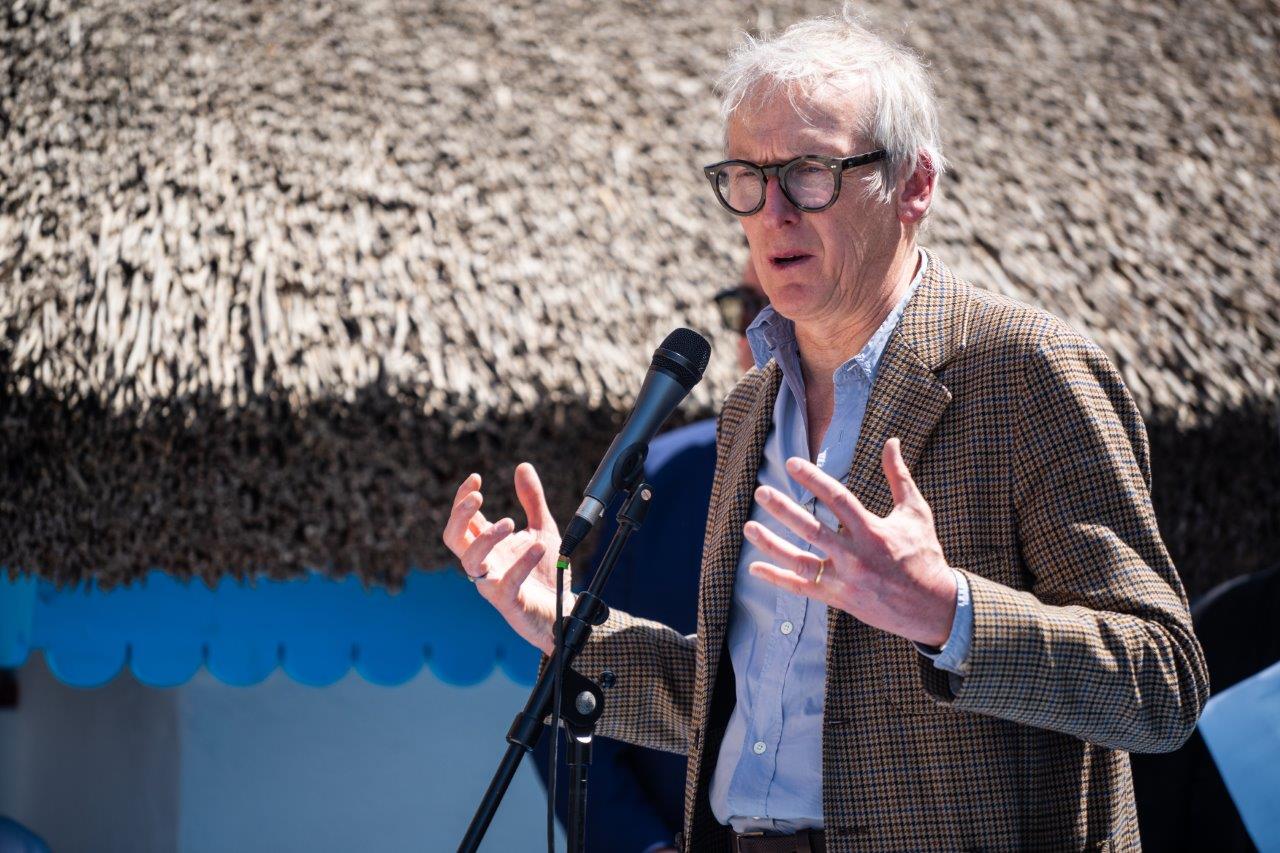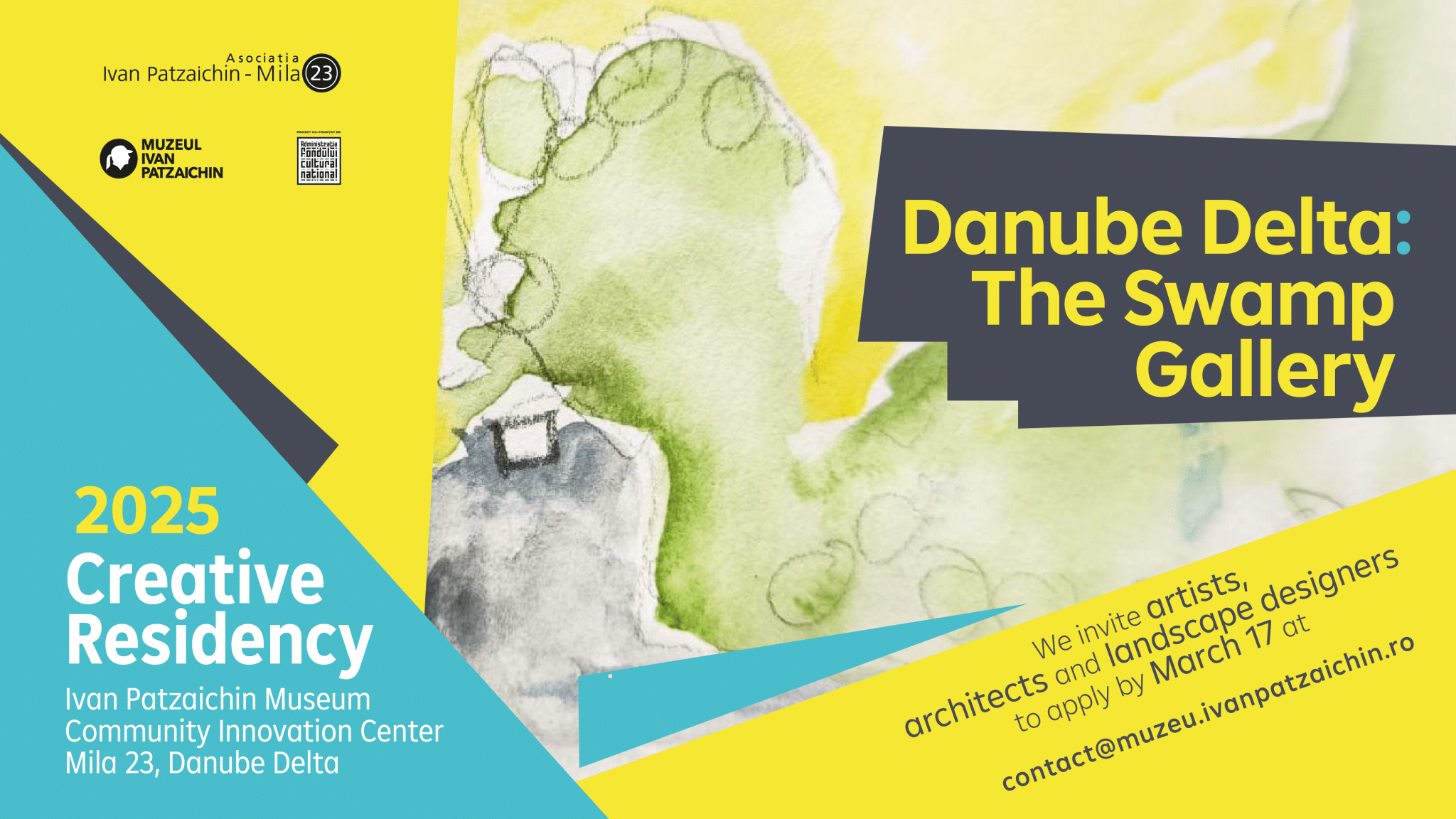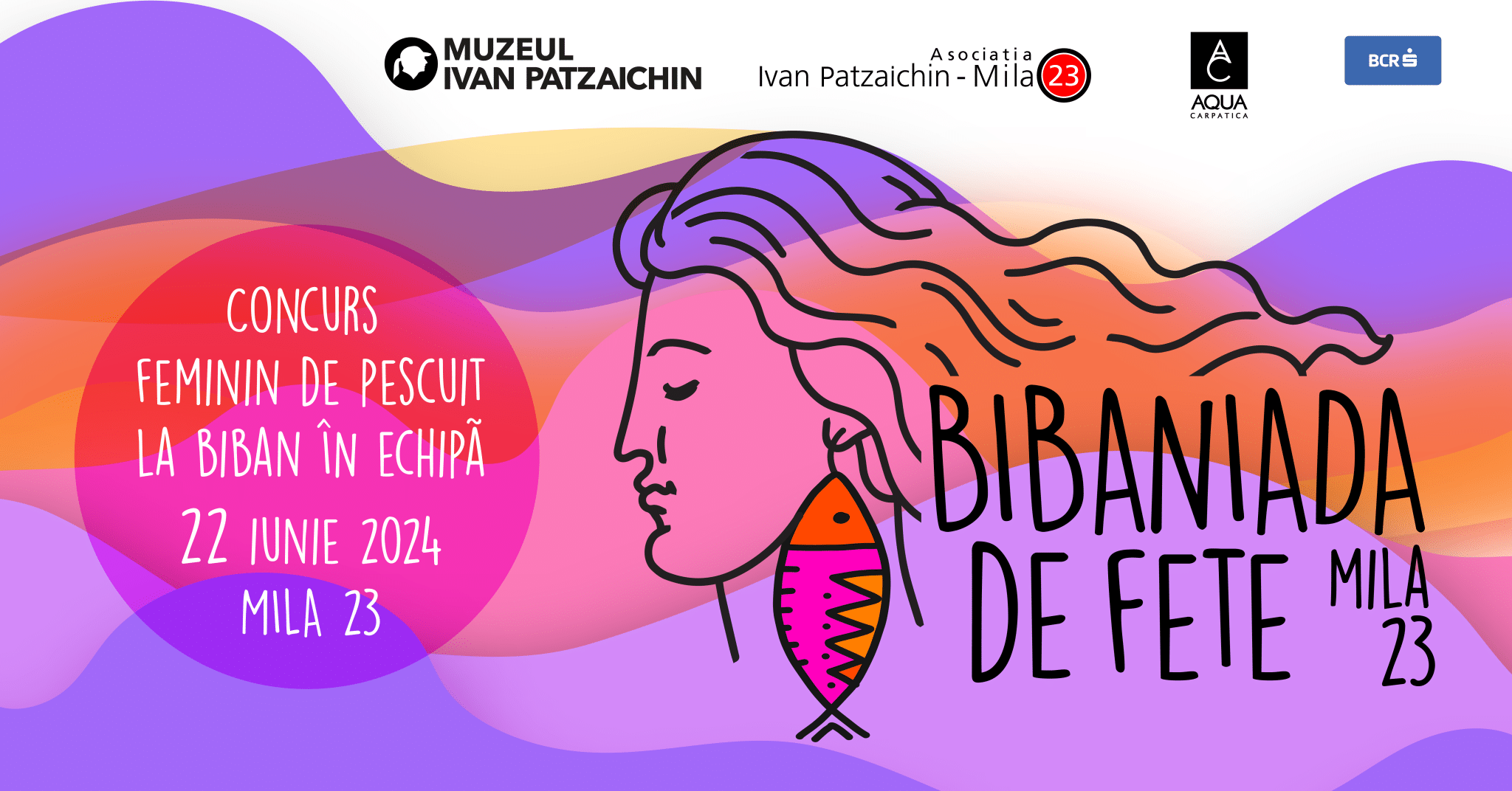Ivan Patzaichin Museum
Mila 23 village, Tulcea county, Danube Delta
In May 2024, the Ivan Patzaichin – Mila 23 Association opens a museum – a contemporary art space & cultural center, in the loving memory of Ivan Patzaichin, Olympic, world, and European champion in canoe sprint.
Ladies and gentlemen,
Welcome to the grand opening of the Ivan Patzaichin Museum, a momentous occasion that marks the beginning of a new era in the cultural landscape of the Danube Delta. As we gather here today amidst the serene beauty of this remarkable region, it is with great pride and anticipation that we embark on this journey together.
Let us embark on a journey through time and literature, tracing the indomitable spirit of the great river and the myriad civilizations it has nurtured and inspired.
The Danube, a lifeline coursing through the very heart of Europe, bears witness to the confluence of cultures, ideologies, and epochs. From its humble origins in the verdant hills of Bavaria to its majestic crescendo as it pours its waters into the vast expanse of the Black Sea, the Danube weaves a tapestry of history, literature, and political intrigue.
In the annals of literature, the Danube stands as a muse for some of humanity’s most profound thinkers and poets. Claudio Magris, in his magnum opus “Danube,” leads us on a voyage of discovery, where the currents of the river mirror the ebb and flow of human civilization. From the poetic verses of Ovid, exiled on its banks, to the existential musings of Kafka, drawn to its waters like a moth to a flame, the Danube has captivated the imagination of countless souls throughout the ages.
Yet, beneath its serene surface lies a tumultuous history fraught with political upheaval and conflict. The Danube, once the northern frontier of the Roman Empire, witnessed the rise and fall of empires, from the glory of Byzantium to the specter of Ottoman domination. Its strategic importance as a natural boundary shaped the destiny of nations and the course of history, as evidenced by the fierce battles fought on its banks, from the Roman legions defending the Limes against barbarian incursions to the Ottoman sieges of Vienna in the heart of Europe.
Even in modern times, the Danube has retained its political significance, serving as a symbol of unity and division in a continent scarred by war and ideology. The Iron Curtain, descending like a pall over Eastern Europe during the Cold War, found its physical manifestation in the form of the Danube, dividing East from West, communism from capitalism, freedom from oppression.
Yet, despite the vicissitudes of history, the Danube endures as a symbol of resilience and continuity, a testament to the indomitable human spirit. The Ivan Patzaichin Museum, nestled in the embrace of the Danube Delta, stands as a bastion of cultural heritage and enlightenment, preserving the rich tapestry of history and literature that defines this timeless river.
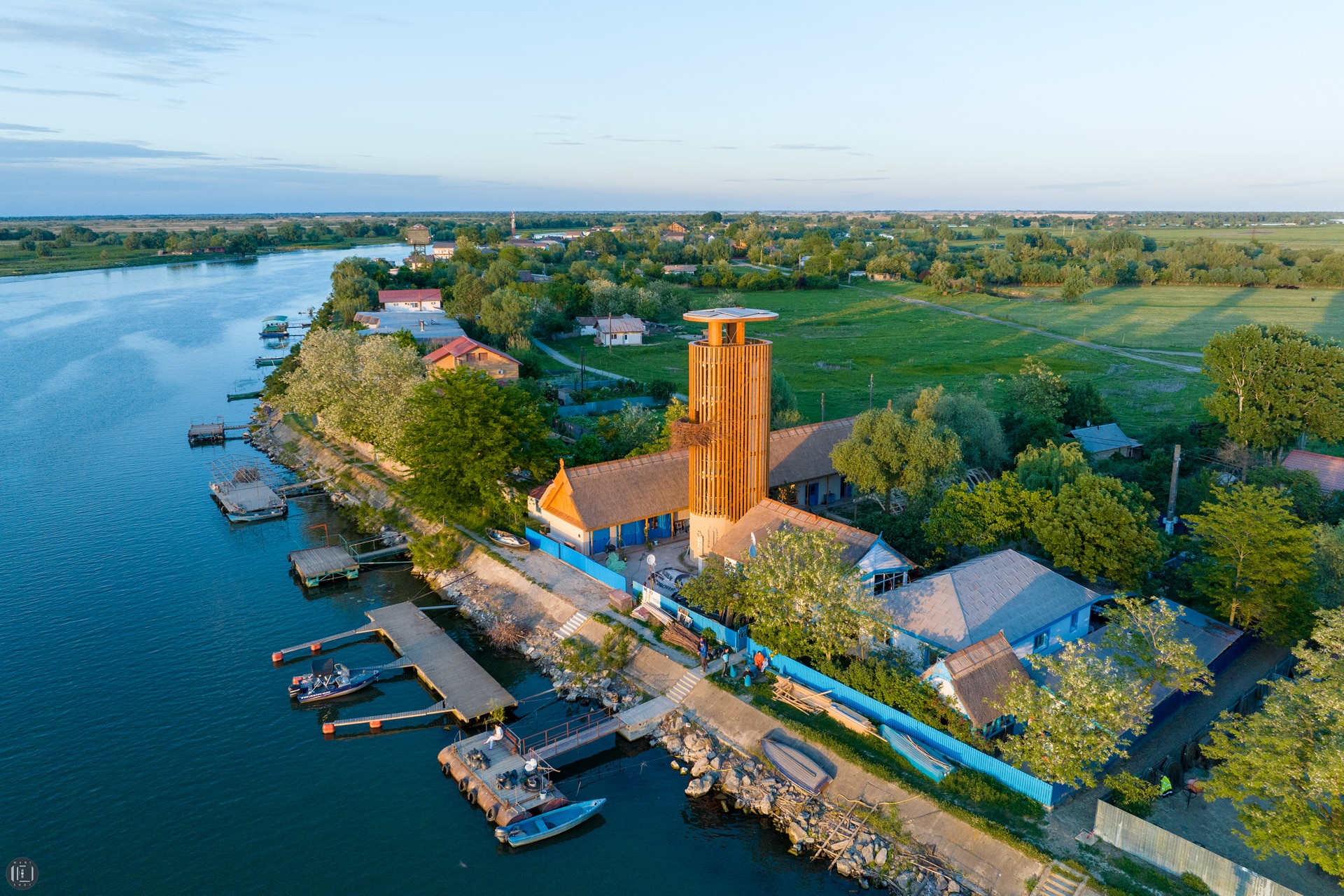
Firstly, let us recognize the Delta of the Danube as not only a geographical wonder but also a symbol of national and European identity. Through the Ivan Patzaichin Museum, we have the opportunity to showcase the rich cultural heritage and contemporary artistic expressions of this region, fostering a sense of pride and belonging among the European community.
Secondly, cultural learning and awareness are paramount to our mission. Through innovative educational programs and interactive experiences, we aim to increase public support and interest in the arts, enhancing our community’s cultural literacy and fostering a deeper appreciation for our shared heritage.
Thirdly, community engagement lies at the core of our vision. The Ivan Patzaichin Museum has the potential to transform the Danube Delta into a vibrant cultural hub, attracting visitors and locals alike. By promoting cultural exchange and understanding, we can build bridges across communities and celebrate the rich diversity of our region.
Fourthly, our aspiration for regional and global leadership is unwavering. By offering premium cultural experiences and showcasing innovative artistic expressions, the Ivan Patzaichin Museum will be recognized as a leader in the cultural domain, both regionally and globally, setting new standards of excellence and creativity.
Fifthly, our commitment to enhancing the quality of life for residents and visitors is fundamental. Through the integration of cultural activities and events, the Ivan Patzaichin Museum will not only enrich the cultural fabric of our community but also improve the overall quality of life, making the Danube Delta a model for sustainable and culturally rich living.
Lastly, the empowerment of artistic talent is a cornerstone of our strategy. By supporting and showcasing local and international artists, we aim to nurture the next generation of cultural practitioners and enrich the artistic landscape of the Danube Delta, ensuring its legacy for generations to come.
The opening of the Ivan Patzaichin Museum represents a pivotal moment in our collective journey—a moment filled with hope, inspiration, and possibility. As we embark on this new chapter, let us remain steadfast in our commitment to fostering a community that celebrates diversity, embraces creativity, and cherishes the natural wonders of the Danube Delta.
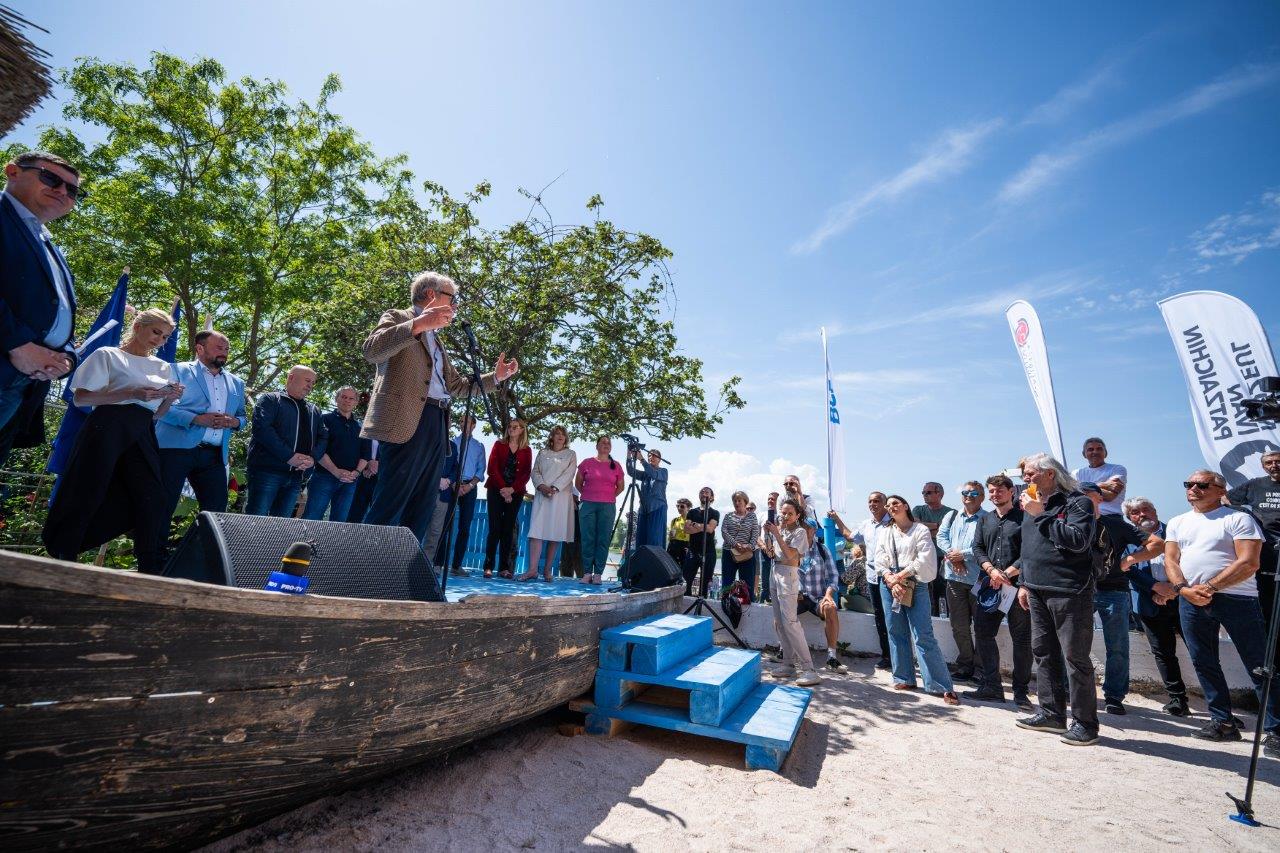
Ladies and gentlemen,
As we gather today to inaugurate the Ivan Patzaichin Museum, nestled within the pristine Danube Delta, we stand at a crossroads of history, culture, and environmental stewardship. Our journey to preserve and celebrate this invaluable heritage is fraught with challenges, yet brimming with opportunities for innovation and collaboration.
1. Current Global Reality:
The urgency of ecological and social crises demands our immediate attention. Human-induced climate change, rampant deforestation, and pollution threaten the delicate balance of ecosystems worldwide. We must confront the stark reality of biodiversity loss and ecological degradation, which not only imperil our natural environment but also exacerbate social inequalities. The recent devastating floods in Pakistan serve as poignant reminders of the catastrophic impact of climate change on vulnerable communities.
2. Challenges Analysis:
The interconnected nature of ecological, economic, and social challenges presents a formidable obstacle to sustainable development. Conflicts over natural resources, geopolitical tensions, and economic disparities further exacerbate these crises, underscoring the urgent need for coordinated action. Moreover, the gap between knowledge and action remains a critical impediment, as scientific consensus on climate change often fails to translate into meaningful policy measures. The COVID-19 pandemic has laid bare the fragility of our global systems and highlighted the imperative for resilience and adaptation in the face of uncertainty.
3. Role of Innovation and Imagination:
Innovation and imagination are our greatest assets in navigating these turbulent waters. Traditional approaches to conservation and resource management must give way to bold, creative solutions that embrace technological advancements and interdisciplinary collaboration. From renewable energy technologies to sustainable agricultural practices, innovation holds the key to addressing the complex challenges of our time. However, we must also confront the crisis of imagination, which stifles our ability to envision alternative futures and transformative pathways. Initiatives like the New European Bauhaus offer a beacon of hope, fostering dialogue and collaboration across disciplines to reimagine our built environment and societal structures.
4. Cultural Heritage as a Catalyst for Change:
The preservation and promotion of cultural heritage play a pivotal role in fostering resilience and social cohesion. By honoring our shared history and cultural diversity, we can build bridges of understanding and empathy across communities. Moreover, cultural heritage serves as a powerful catalyst for sustainable development, providing opportunities for economic empowerment, environmental conservation, and social inclusion. Through initiatives like community-based heritage tourism and indigenous knowledge exchange programs, we can harness the transformative potential of cultural heritage to address pressing global challenges.
5. Youth Empowerment and Intergenerational Dialogue:
Engaging the next generation in our efforts to safeguard our planet and cultural heritage is paramount. Youth-led initiatives, educational programs, and intergenerational dialogues provide platforms for knowledge exchange, innovation, and collective action. By empowering young people as stewards of our shared future, we can foster a culture of sustainability and resilience that transcends borders and generations.
As we embark on this journey of preservation and renewal, let us draw inspiration from the timeless wisdom of the Danube and the visionary leadership of Ivan Patzaichin. The Ivan Patzaichin Museum stands as a testament to our commitment to safeguarding our natural and cultural heritage for generations to come.
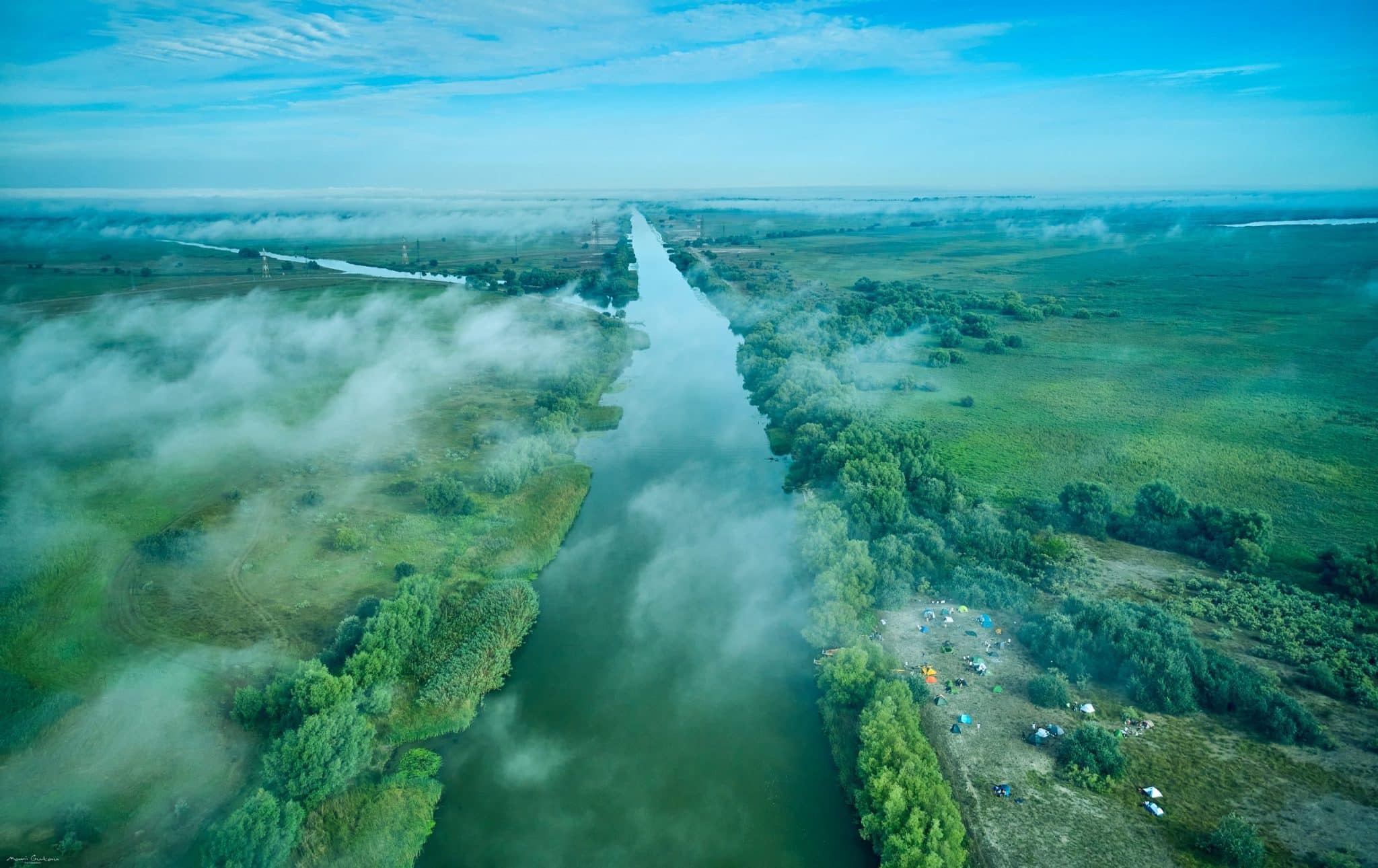
In the heart of the Danube Delta, where the river’s sinuous embrace cradles a world of wonder, there stands a beacon of enlightenment—the Ivan Patzaichin Museum. Like a river winding through the landscape of time, this museum flows with the currents of innovation and tradition, weaving a tapestry of experiences that immerse visitors in the dynamic ecosystem of the Delta.
Step inside, and you’ll find yourself embarking on a journey unlike any other. Interactive exhibits beckon, inviting you to navigate the Delta’s labyrinthine channels on simulated boat rides, where every twist and turn reveals the secrets of its watery realm. Augmented reality displays come to life, illuminating the underwater world teeming with biodiversity, as if you’re diving beneath the surface to witness the dance of life.
But the museum is more than a showcase of nature’s wonders—it is a canvas for artistic expression. Collaborations with local artists give rise to striking installations that capture the essence of the Delta’s beauty and fragility. Here, sculptures fashioned from reclaimed materials stand as silent sentinels, reminding us of the delicate balance we must preserve.
Education is at the heart of the museum’s mission, as workshops on water conservation, environmental stewardship, and Delta crafts beckon curious minds of all ages. Hands-on activities and guided tours offer glimpses into sustainable fishing practices, wetland restoration efforts, and the cultural heritage of Delta communities, fostering a deeper understanding of our interconnectedness with the natural world.
Beyond its walls, the museum extends its reach into the community, hosting forums and cultural festivals that celebrate the Delta’s rich heritage. Here, the rhythms of traditional music mingle with the aromas of culinary delights, as residents and visitors alike come together to honor the land that sustains them.
In the dim glow of the auditorium, environmental documentaries flicker to life, casting light on the challenges facing the Delta and inspiring action. Post-screening discussions echo with the voices of those committed to preserving this precious ecosystem for generations to come.
And when the call of adventure beckons, riverboat tours depart from the museum’s waterfront, carrying passengers on journeys of discovery along the Delta’s meandering waterways. Guided by knowledgeable experts, these excursions offer glimpses of the Delta’s hidden treasures and forge connections that endure long after the journey’s end.
In the Ivan Patzaichin Museum, the Danube Delta finds its voice—a symphony of nature, culture, and conservation that resonates with all who venture within. Here, amidst the ebb and flow of life, we find not just a museum, but a sanctuary—a place where the past meets the present, and the future takes root in the fertile soil of imagination.
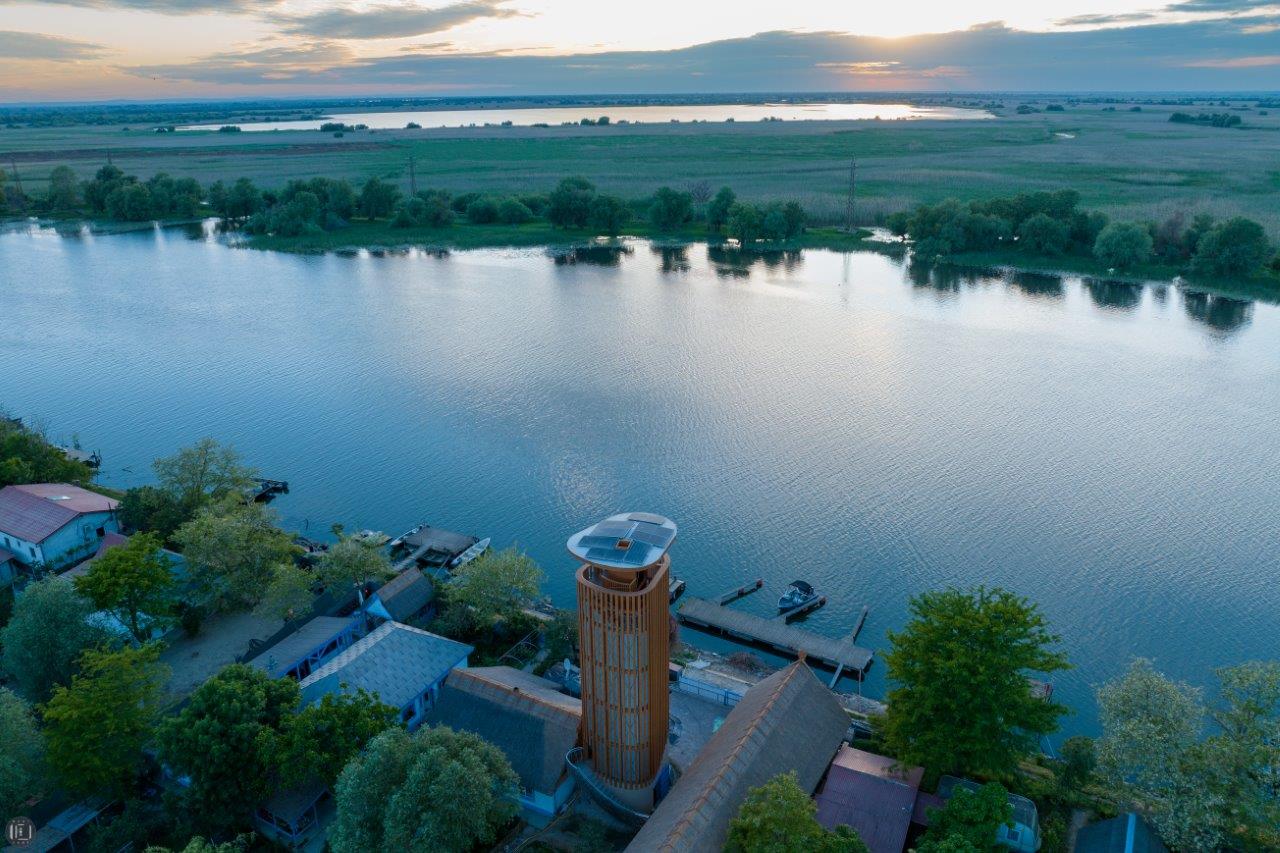
If we can realise these projects in the coming years then the Ivan Patzaichin Museum becomes not only a repository of knowledge and heritage but also a catalyst for conservation, education, and community engagement in the Danube Delta.
In closing, allow me to unveil a visionary concept—an ambitious endeavor poised to redefine the cultural and intellectual landscape of Europe’s periphery. Inspired by the radical spirit of Arte Povera and guided by the humanist ideals of Erasmus, we propose the transformation of the Ivan Patzaichin Museum into the New European Bauhaus University and Residency.
Imagine a nexus of creativity and innovation nestled amidst the tranquil beauty of the Danube Delta—a place where the boundaries between art, science, and nature blur, and where the periphery becomes the epicenter of transformative change. At the New European Bauhaus University, we envision a dynamic learning environment where students from diverse backgrounds converge to explore the intersections of culture, sustainability, and community building.
But our vision extends beyond traditional academia. The university will serve as a laboratory for democratic experimentation—a crucible where the principles of demos praxis, inspired by the timeless wisdom of Erasmus, are put into action. Here, students and scholars will collaborate with local communities to co-create solutions to pressing ecological and social challenges, forging a new paradigm of participatory democracy rooted in the ethos of inclusivity and empowerment.
Moreover, the university will double as a residency for artists, intellectuals, and visionaries—an incubator for radical ideas and creative expression. Inspired by the spirit of Arte Povera, which celebrates the transformative power of everyday materials and experiences, the residency program will invite participants to immerse themselves in the unique cultural tapestry of the Delta, drawing inspiration from its landscapes, traditions, and people.
As we embark on this audacious journey, we invite you to join us in shaping the future—a future where the periphery is not marginalized, but celebrated as the crucible of innovation and renewal. Together, let us build a New European Bauhaus—a beacon of hope and possibility, where the spirit of Erasmus and the vision of Ivan Patzaichin converge to chart a bold new course for Europe and beyond.
Thank you,
Paul Dujardin
Commissioner Art Nouveau Year Brussels Capital Region (BCR)
@Jubelpark-Cinquantenaire
European Site for Art, Science & Heritage
